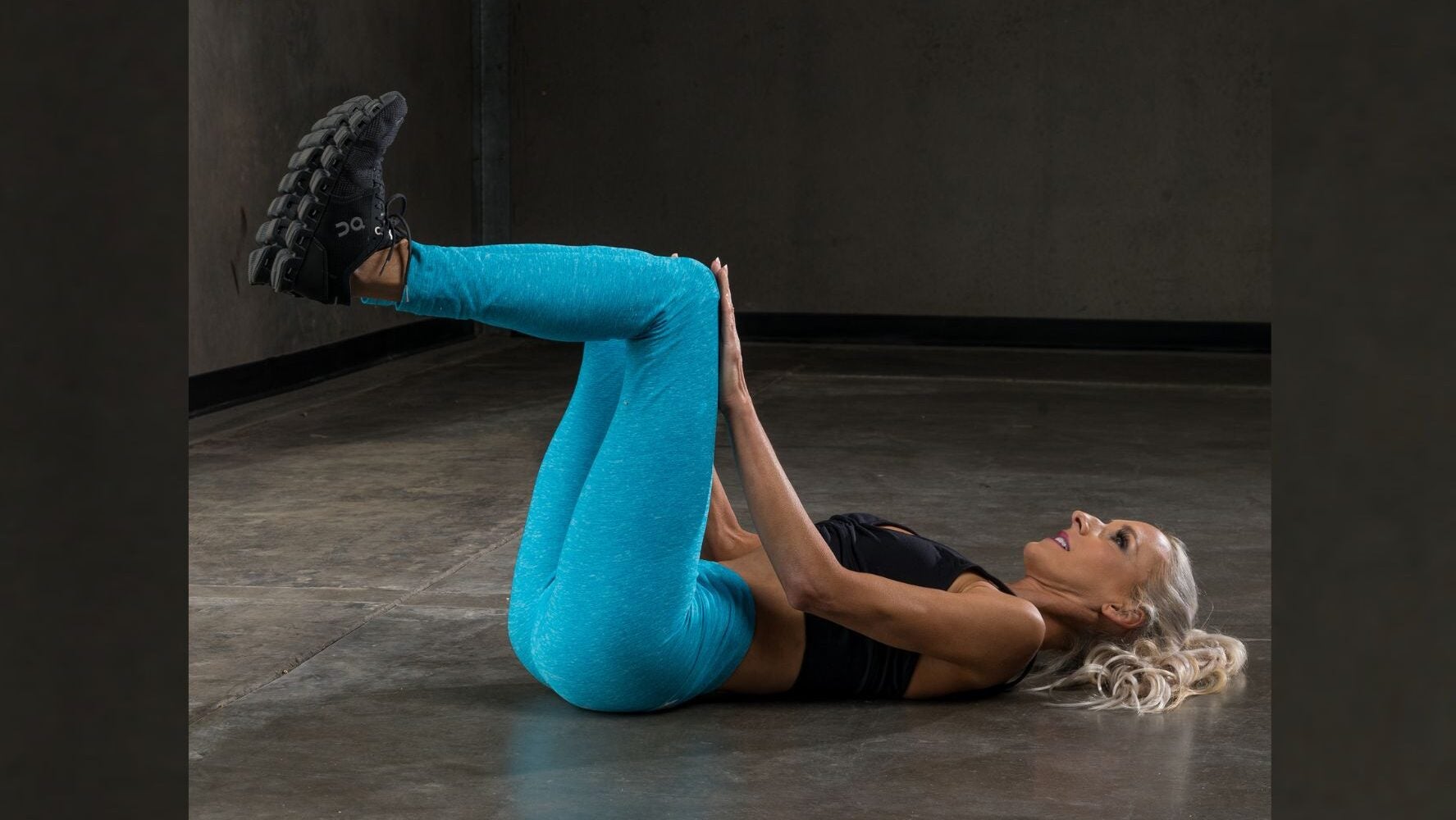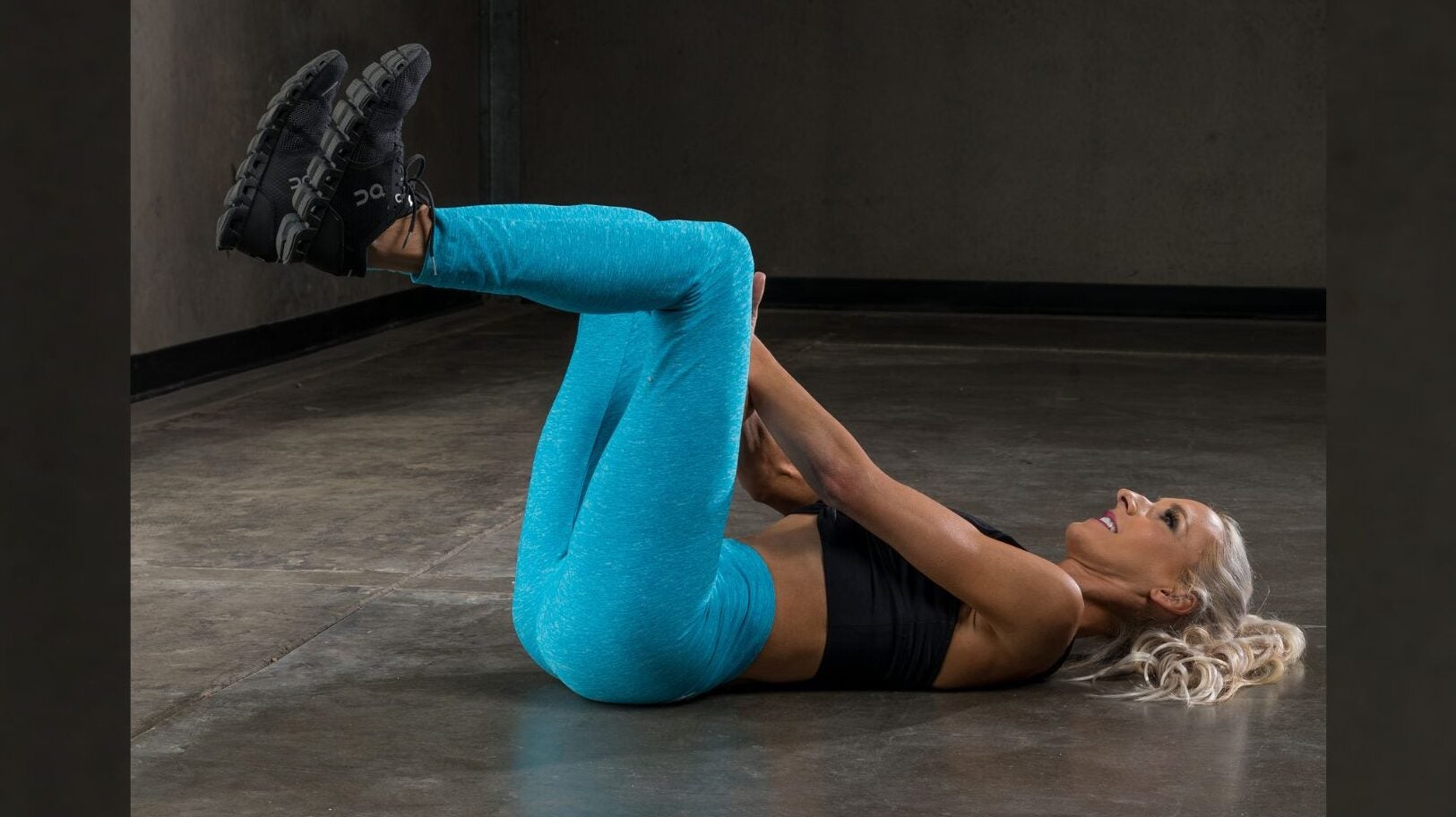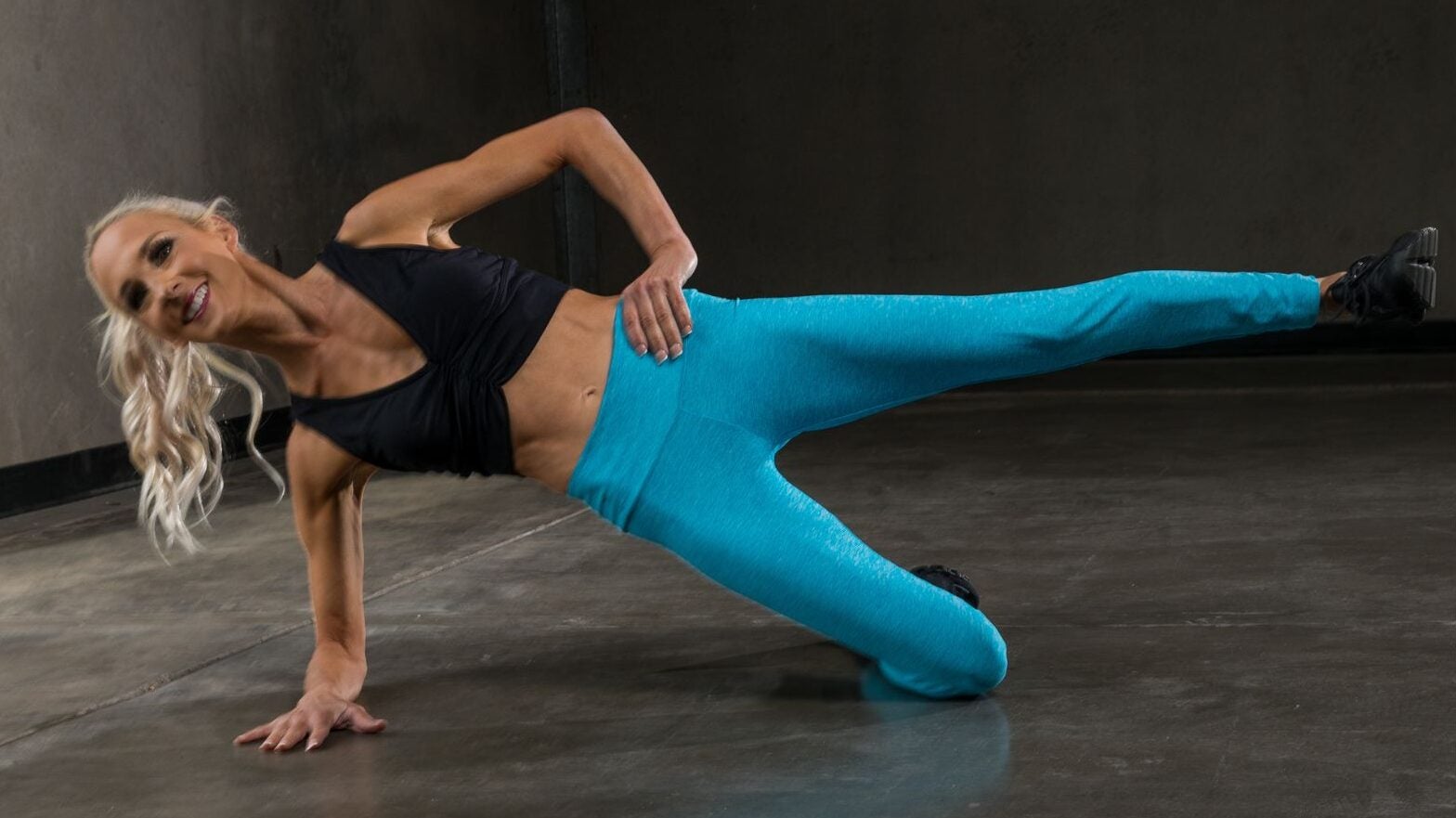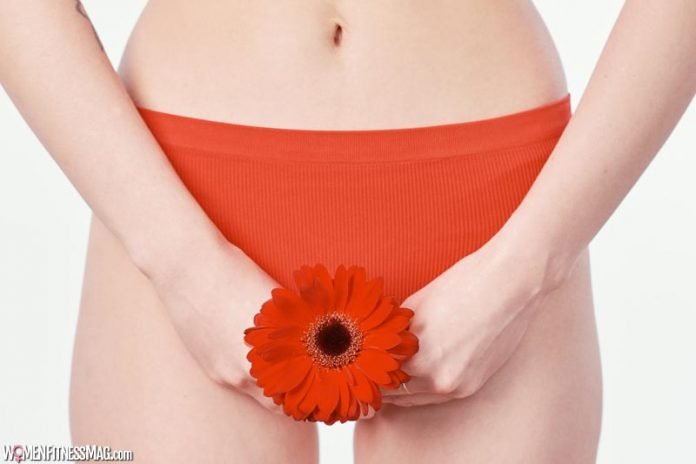
The Core-Crushing No-Crunch Abs Circuit
How many sets of crunches does it take to build abs? The answer might surprise you, because in reality, it’s zero — and the no-crunch abs circuit below is proof.
When it comes down to it, visible abs emerge from three interactive elements: genetics, nutrition choices and muscle tone. Having toned abdominal muscles also means that your nervous system can hold your core tight without having to think about it. Hello, injury prevention!
Crunches are a longtime favorite for those looking to develop the 6-pack part of the abs, but crunches don’t fully develop the underlying layer, aka the transverse abdominis. This layer of core muscle wraps around your entire torso between your pelvis and rib cage, essentially making it a built-in girdle. This is the abdominal layer that creates overall core strength that help produce washboard abs, if that’s one of your personal goals.
Training abdominals also doesn’t mean trying to consciously suck your abs in all day — just a few minutes of intentional training per day is a far more effective strategy.
Now the questions are: Which exercises and how many reps make for the most effective approach?
The 4-Move No-Crunch Abs Circuit
Here’s a four-exercise, no-crunch abs circuit that you can perform daily. Since the movements involve holding positions instead of moving the spine through space, you don’t have to take off days for joint wear-and-tear recovery. Transverse abs are strong endurance muscles that are built to last!
All you need to do is one set of these exercises, and just one rep each as you’re first starting out — but it won’t be as easy as it sounds when you become more advanced. Start by holding each position for just 10 seconds. Perform this circuit daily, and build your core endurance by setting a goal to increase each hold by 5 to 10 seconds per week. If you reach 2 minutes, continue on at this level as part of your core strength maintenance routine.
90-90 Hold

How-to:
- Lie on your back with your hips and knees bent to 90 degrees. Your shins should be parallel to the floor like a tabletop.
- Keep your head on the floor as you draw your bellybutton in toward your back. Try to flatten your back on the floor.
- Place your hands on your thighs. Very gently push your thighs toward your hands. No movement should occur. If your thighs drift toward your chest, or away from your body, you are pushing too hard.
Alternative positions:
- Thighs closer: If the 90-90 position creates excessive low back, hip flexor, or neck tension, bring your thighs closer to your chest; then hold this position.
- External support: If the thighs-closer variation still produces uncomfortable tension, support your feet on a chair or wall. As you build deep core strength, you can gradually decrease the external support.
Cross Hold

How-to:
- Begin in the same position as the 90-90 hold.
- Keep your head on the floor as you draw your bellybutton in toward your back. Try to flatten your back on the floor.
- Cross your forearms to place your palms on the opposite side’s inner thigh. Very gently push your inner thighs toward your hands. No movement should occur. If your thighs drift inward or outward from the starting position, you are pushing too hard.
Alternative positions:
- Use the same alternative positions as the 90-90 hold.
Bear Hold

How-to:
- Begin on your hands and knees. Your hands should be directly under your shoulders, and your knees should be directly under your hips. This creates a flat back position, like a table with four sturdy supporting legs.
- Keep your back flat and head in line with your spine as you draw your bellybutton up and in. Pretend you’re trying to tuck your bellybutton up under your rib cage.
- Actively push the thumb side of your palm and all of your fingers against the floor, as if you are trying to push the floor into the basement.
- Levitate your knees just one inch off the floor. Higher is not better.
Alternative positions:
- Knees closer: If the table top position creates excessive low-back or neck tension, bring your thighs closer to your chest as you set up the all-fours position.
- On forearms: If the table top position creates excessive wrist tension, you can perform the exercise on your forearms. If this variation is too stressful on your low back, place your forearms on an elevated surface like a 6-inch plyo box or aerobic step.
Side Knee Plank Leg Lift

How-to:
- Begin in a side plank on your knees. Check to see that your elbow is directly under your armpit.
- Keep a straight line from the back of your head to the back of your knees as you draw your bellybutton up and in. Pretend you’re trying to tuck your bellybutton up under your rib cage.
- Actively push your supporting palm and forearm into the floor to help activate the side of your core.
- Straighten your top leg, then squeeze your glutes to elevate your top leg approximately one foot off the ground. Keep the heel of the elevated leg in line with the back of your head.
Alternative positions:
- No leg lift: If the leg lift position creates shoulder, elbow, or low-back discomfort, perform a side plank on knees without the leg lift instead.
- Elevated surface: If the no leg lift position still creates too much shoulder, elbow, or low-back tension, begin with your arm on an elevated surface like an aerobic step. Add padding under your elbow as needed for comfort.
Trainer Notes
Keep in mind that low-back, hip flexor or neck discomfort are signs that you’re holding the positions too long. Longer is not better if your low back is compensating for your transverse abdominis, so focus on better quality over quantity. And, of course, focus on feeling your abs engage. If holding the positions for less than 10 seconds still creates excessive low-back, hip flexor, or neck discomfort, use the alternative position suggestions to help engage your desired core muscles.
Results rely on consistency. Master these four exercises, then bookmark them as part of your daily core routine. And as always, remember that abs may be prepped in the gym, but they’re made in the kitchen.
Check out our 9 Meals That Make Abs Pop here!
Published at Mon, 09 May 2022 10:26:07 -0700






